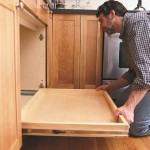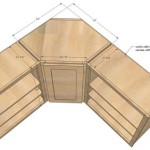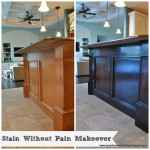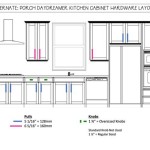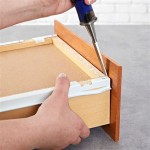Can You Restain Cabinets?
Kitchen cabinets significantly impact a kitchen's overall aesthetic and functionality. Over time, cabinets can show wear and tear, or the homeowner's style preferences may change. Refinishing cabinets, specifically restaining them, is a popular option for updating a kitchen without the significant expense of a full replacement. This process involves altering the color and finish of the wood while preserving the existing cabinet structure.
Assessing Cabinet Suitability for Restaining
Not all cabinets are suitable candidates for restaining. The process is most effective on solid wood cabinets. Cabinets constructed from particleboard, MDF, or other composite materials with a veneer or laminate finish are not typically suitable. The veneer or laminate layer prevents the stain from penetrating the underlying material, resulting in an uneven and unsatisfactory finish.
Preparing the Cabinets for Restaining
Thorough preparation is crucial for a successful restaining project. This involves removing the cabinet doors and hardware. Next, the existing finish needs to be removed. This can be achieved through chemical stripping, sanding, or a combination of the two. Chemical strippers can effectively remove multiple layers of finish but require careful handling and proper ventilation. Sanding, while more labor-intensive, offers greater control and avoids the use of harsh chemicals. Ideally, sanding should progress through progressively finer grits, culminating in a smooth surface ready for staining.
Selecting the Right Stain
The type of stain selected significantly impacts the final appearance. Oil-based stains offer deep penetration and rich color, making them a popular choice for highlighting wood grain. Water-based stains are easier to clean up and dry faster, making them suitable for quicker projects. Gel stains provide a thicker consistency, helpful for vertical surfaces and intricate details. Testing the chosen stain on an inconspicuous area of the cabinet is strongly recommended to ensure the desired color and finish.
Applying the Stain
Proper application technique is essential for achieving a uniform and professional-looking finish. The stain should be applied in the direction of the wood grain using a brush, rag, or foam applicator. Applying thin, even coats prevents blotchiness and allows for better control of the color intensity. Multiple coats may be necessary to achieve the desired depth of color, allowing ample drying time between each application.
Protecting the Finish
Once the stain has dried completely, a protective topcoat is essential. This topcoat not only enhances the beauty of the stain but also protects the wood from moisture, scratches, and everyday wear and tear. Common topcoats include polyurethane, varnish, and lacquer. Each offers varying levels of durability and sheen, allowing homeowners to select the finish that best suits their lifestyle and aesthetic preferences. Similar to stain application, applying the topcoat in thin, even coats is crucial for a smooth and professional finish.
Considering Professional Refinishing
While restaining cabinets can be a DIY project, it's a complex process that requires patience, skill, and attention to detail. For those lacking the necessary experience or tools, hiring a professional refinishing service can be a worthwhile investment. Professionals possess the expertise and equipment to achieve a flawless, long-lasting finish, minimizing the risk of common DIY mistakes.
Addressing Common Refinishing Issues
Several challenges can arise during the refinishing process. Blotchy stain can result from uneven application or inadequate surface preparation. Drips and runs in the topcoat can detract from the overall appearance. Addressing these issues often involves sanding back the affected area and reapplying the stain or topcoat. Understanding potential problems and how to rectify them can contribute significantly to a successful outcome.
Evaluating the Cost-Effectiveness of Restaining
Refinishing cabinets is typically a more cost-effective option than replacing them entirely. The overall cost depends on factors such as the size of the kitchen, the type of stain and finish chosen, and whether the homeowner undertakes the project themselves or hires a professional. Carefully evaluating the costs involved can help homeowners determine if restaining is the most financially viable option for updating their kitchen.

How I Updated My Oak Cabinets Without Paint By Using Briwax Easy Budget Kitchen Makeover Only 24

Can You Restain Cabinets A Comprehensive Guide Southwest Kitchen

Repainting Vs Restaining Kitchen Cabinets Kitchens Redefined

Staining Your Wood Cabinets Darker Young House Love

Cabinet Refinishing An 8 Step Guide For Pro Painters Ppc

Refinishing Kitchen Cabinets Modern Refacing Made Easy Wisewood

Cabinet Refinishing Guide

How To Make Rustic Kitchen Cabinets By Refinishing Them The Best Stain Color Amanda Katherine

The Fast Affordable Way To Upgrade Your Kitchen Cabinet Refinishing

Cabinet Refinishing Services N Hance Ontario
Related Posts

